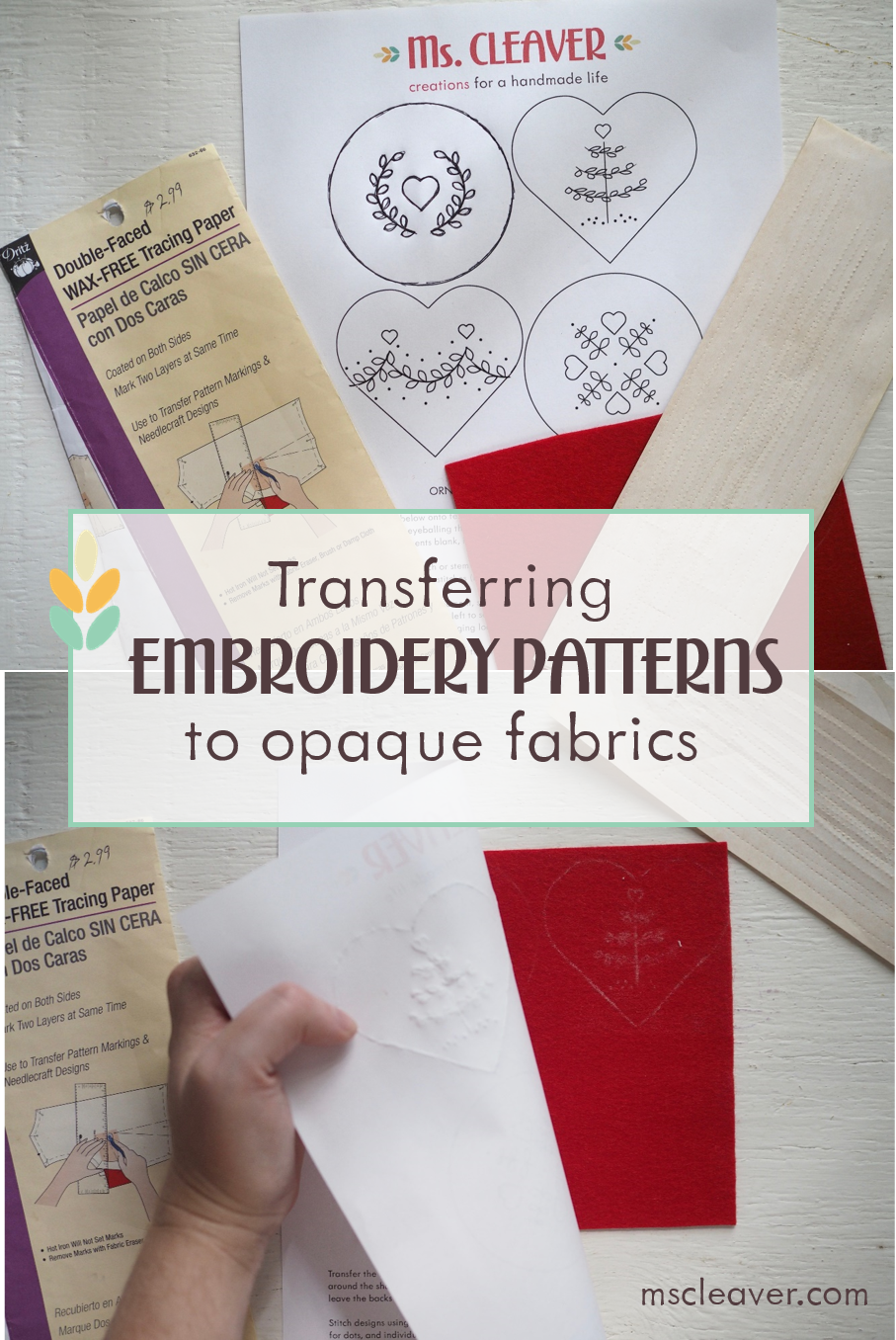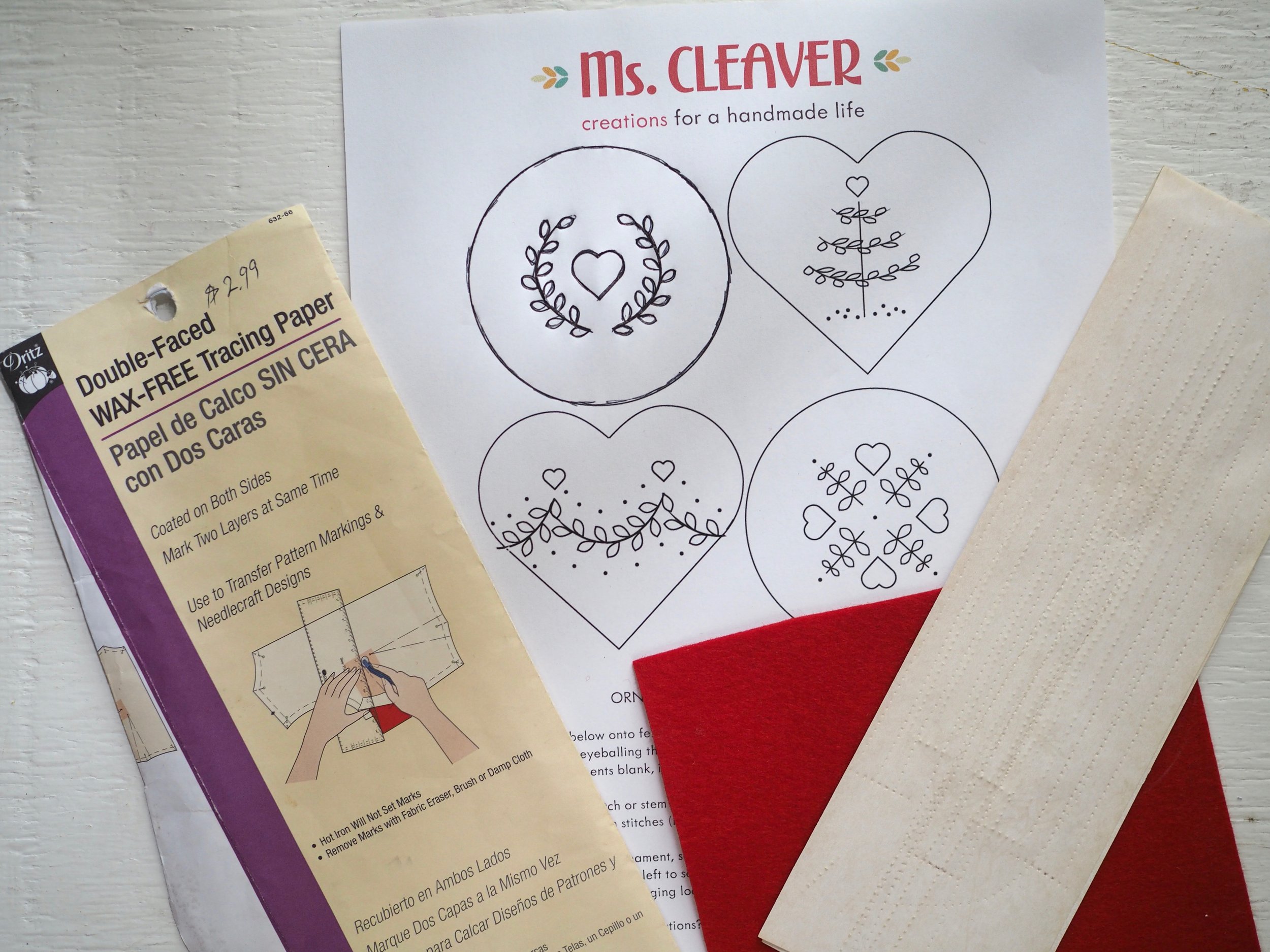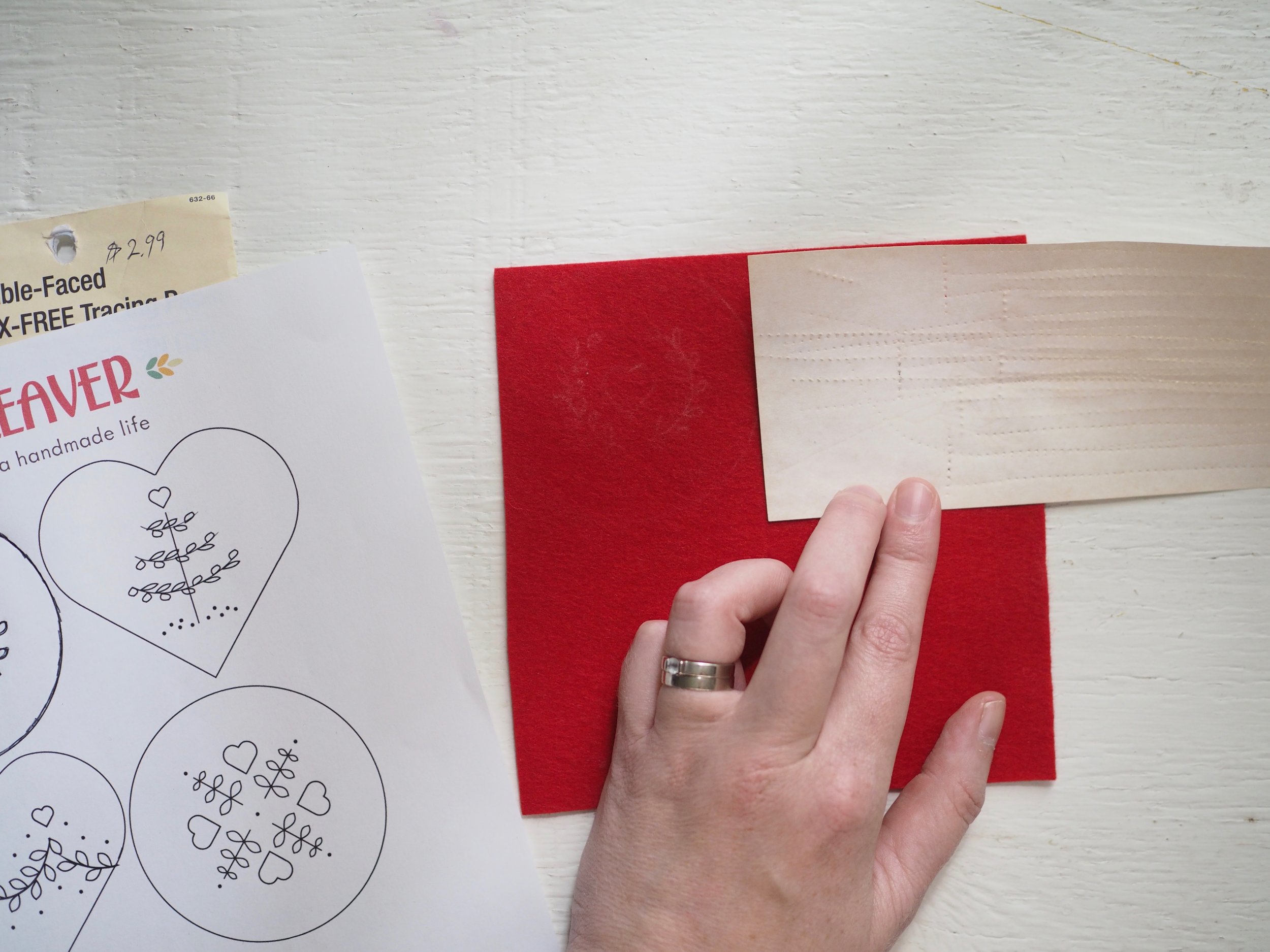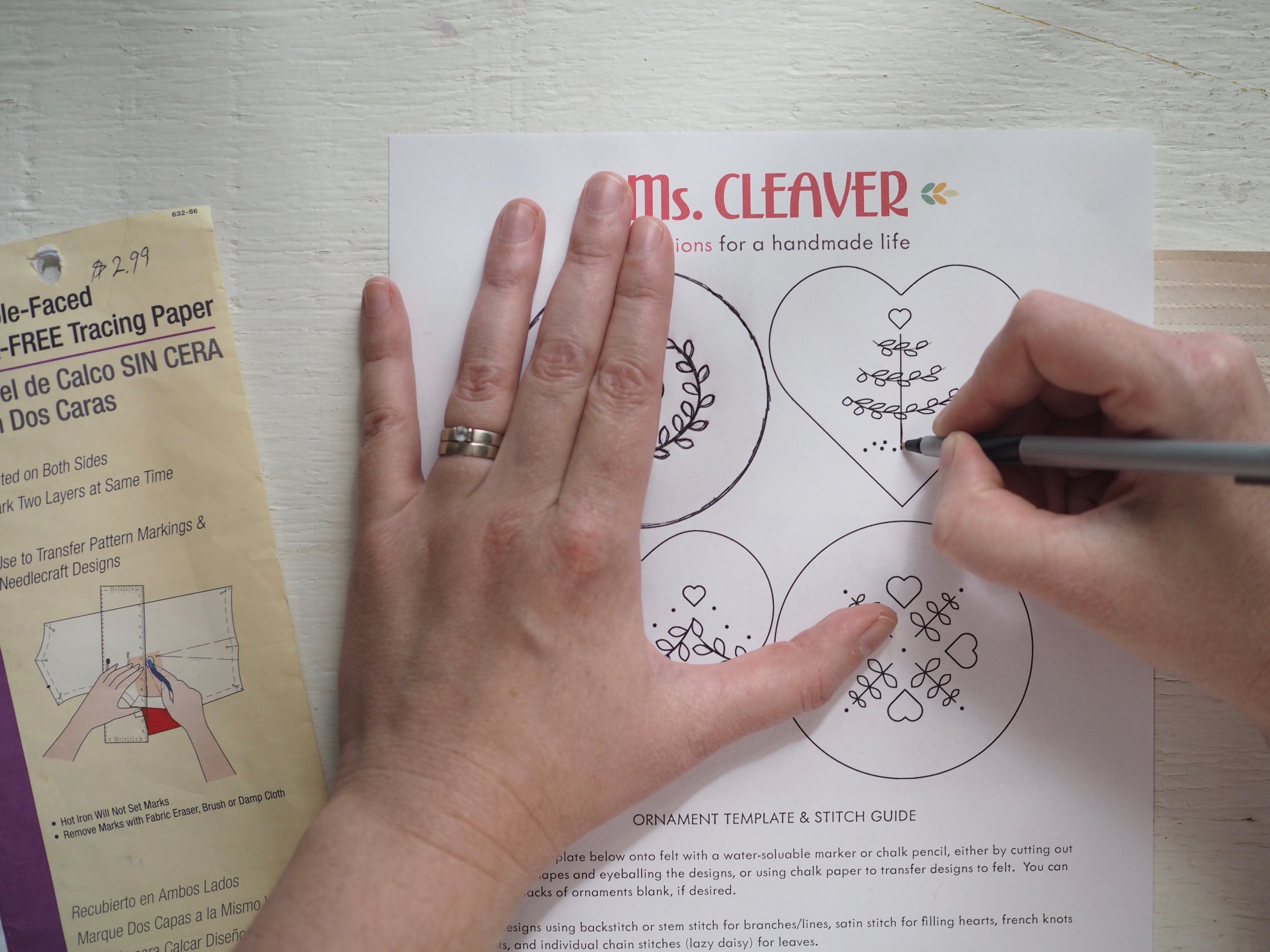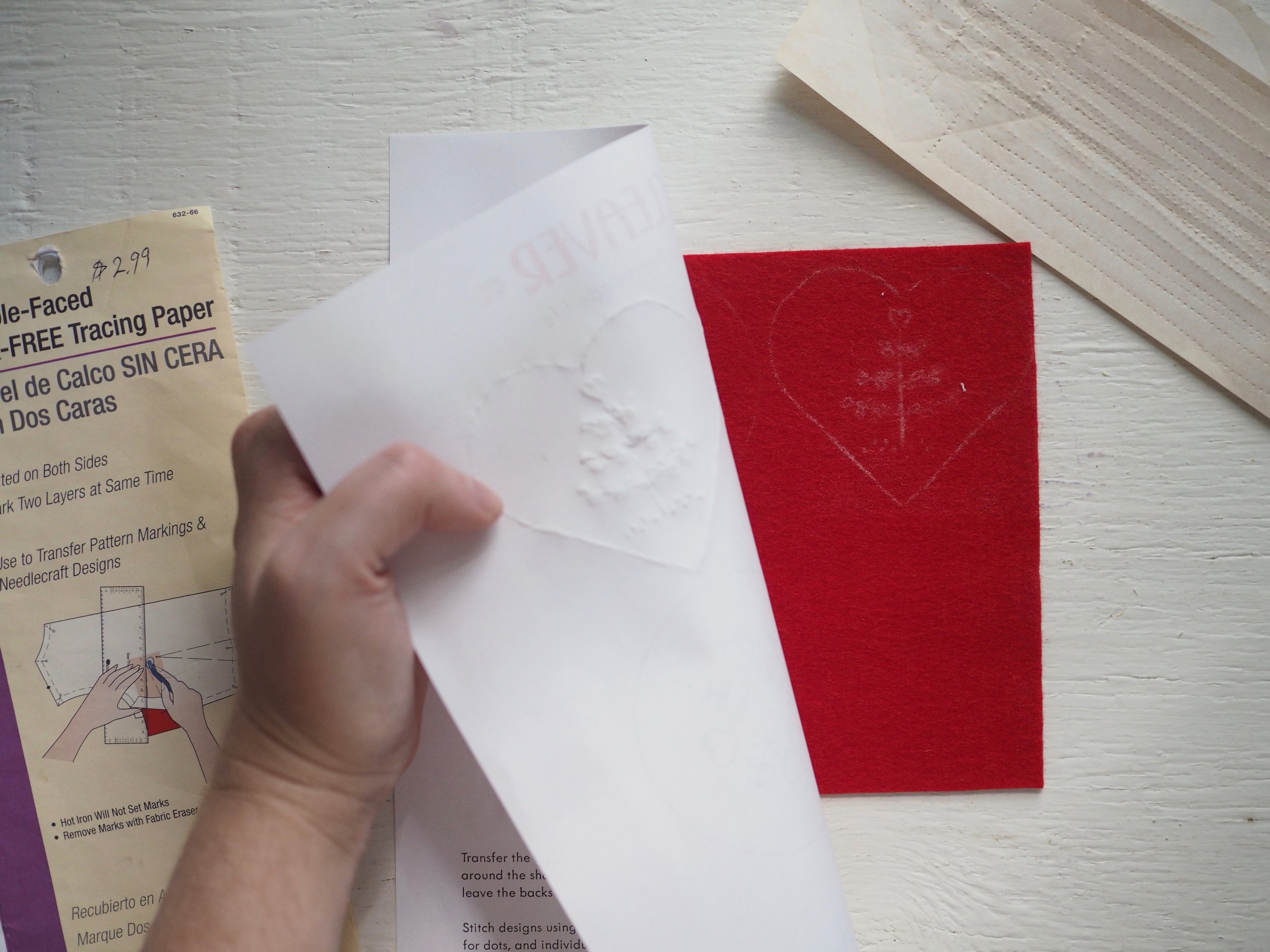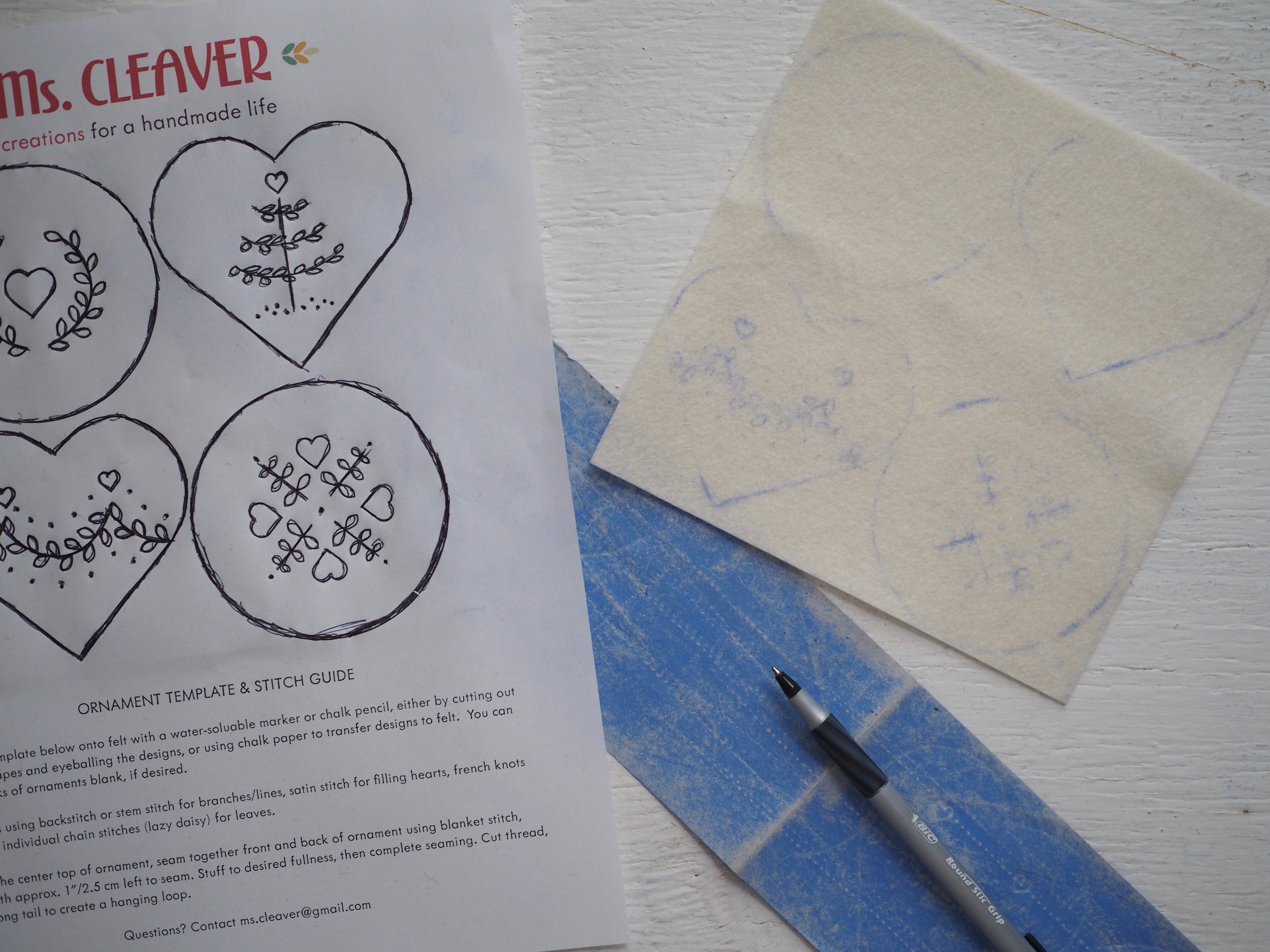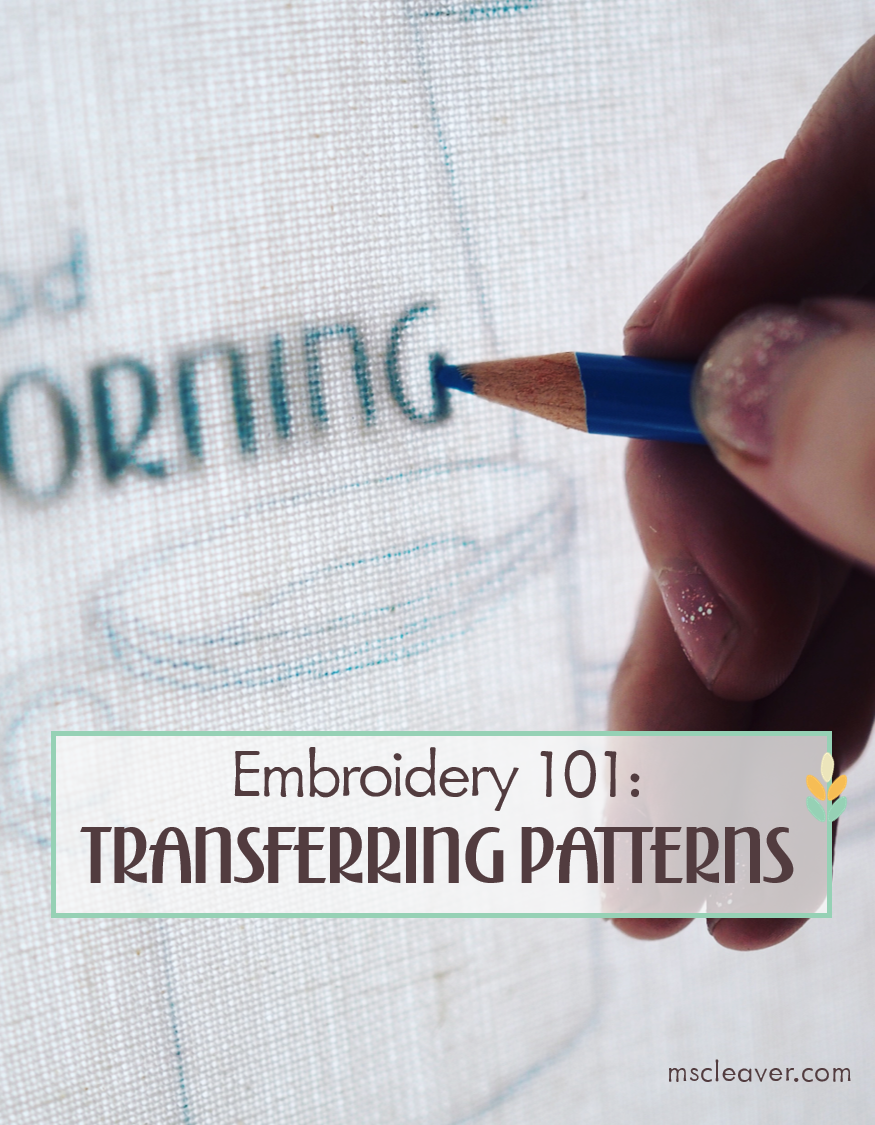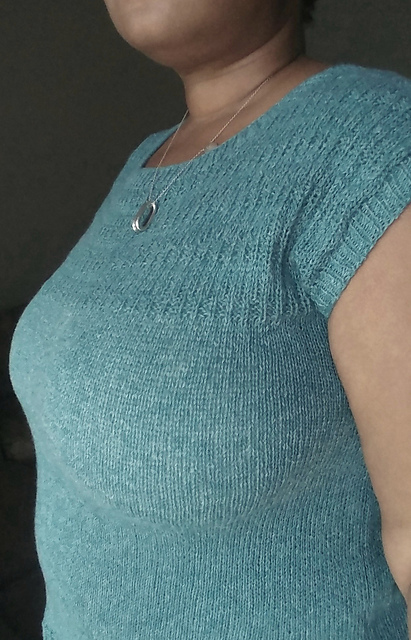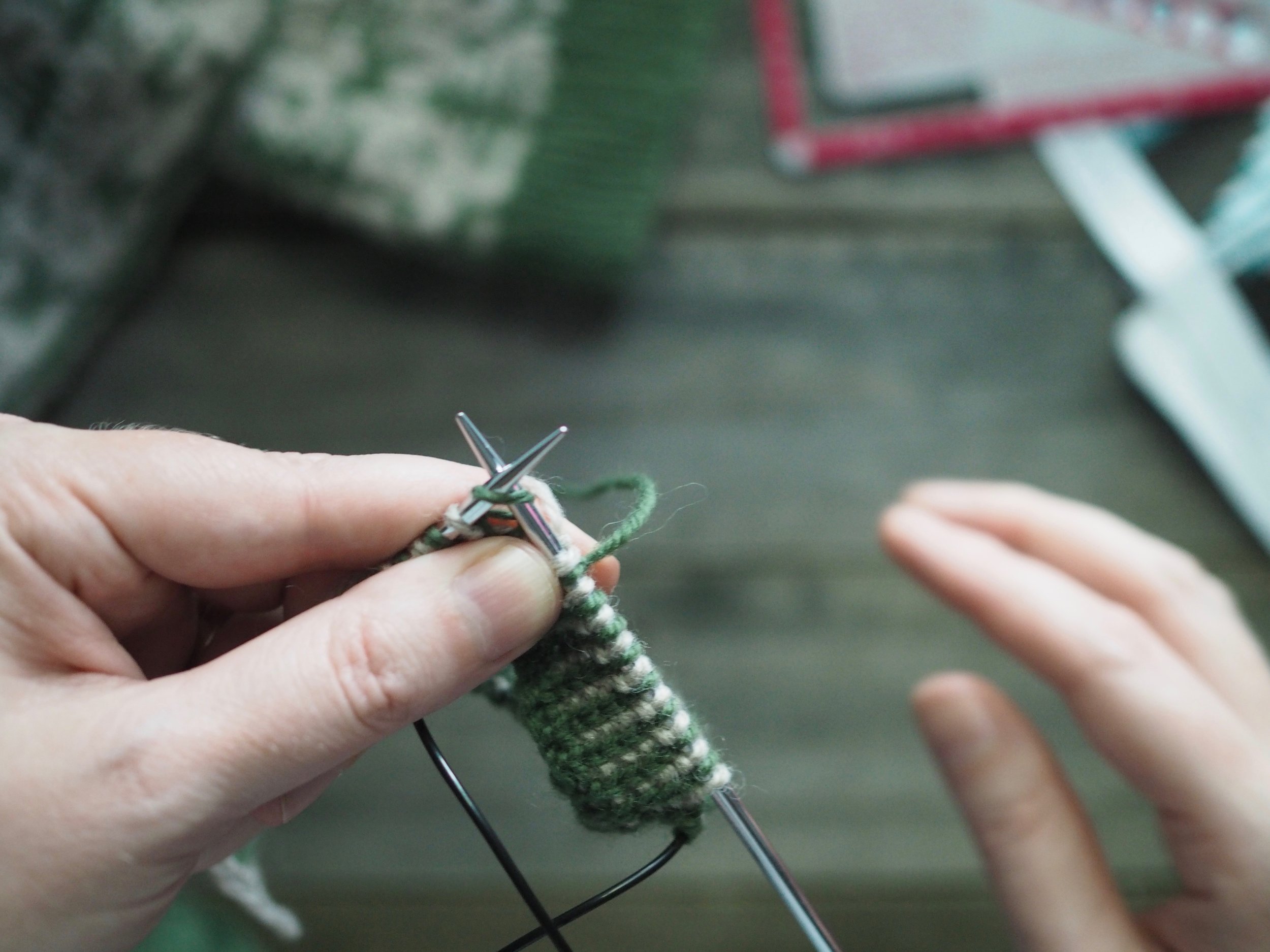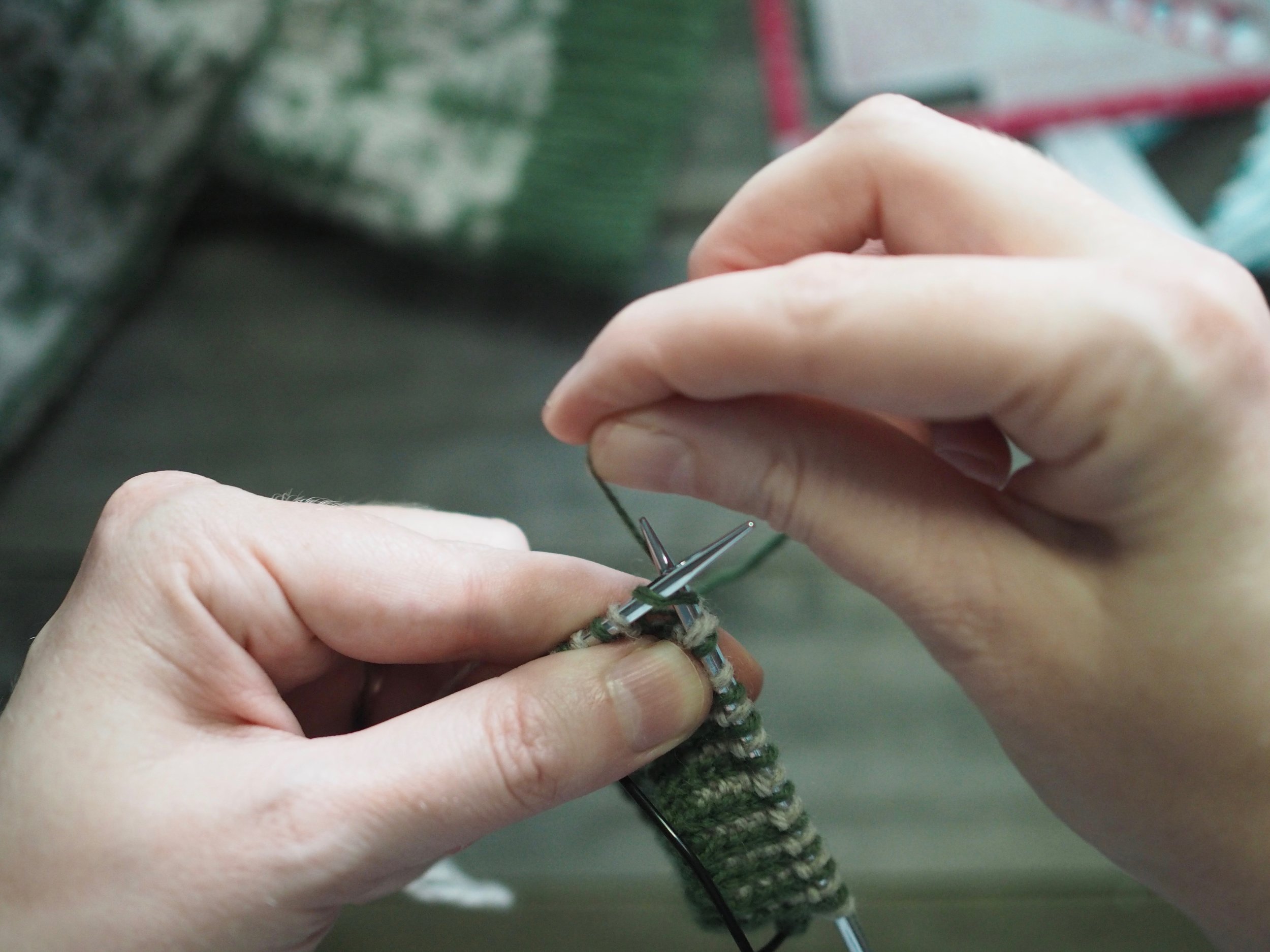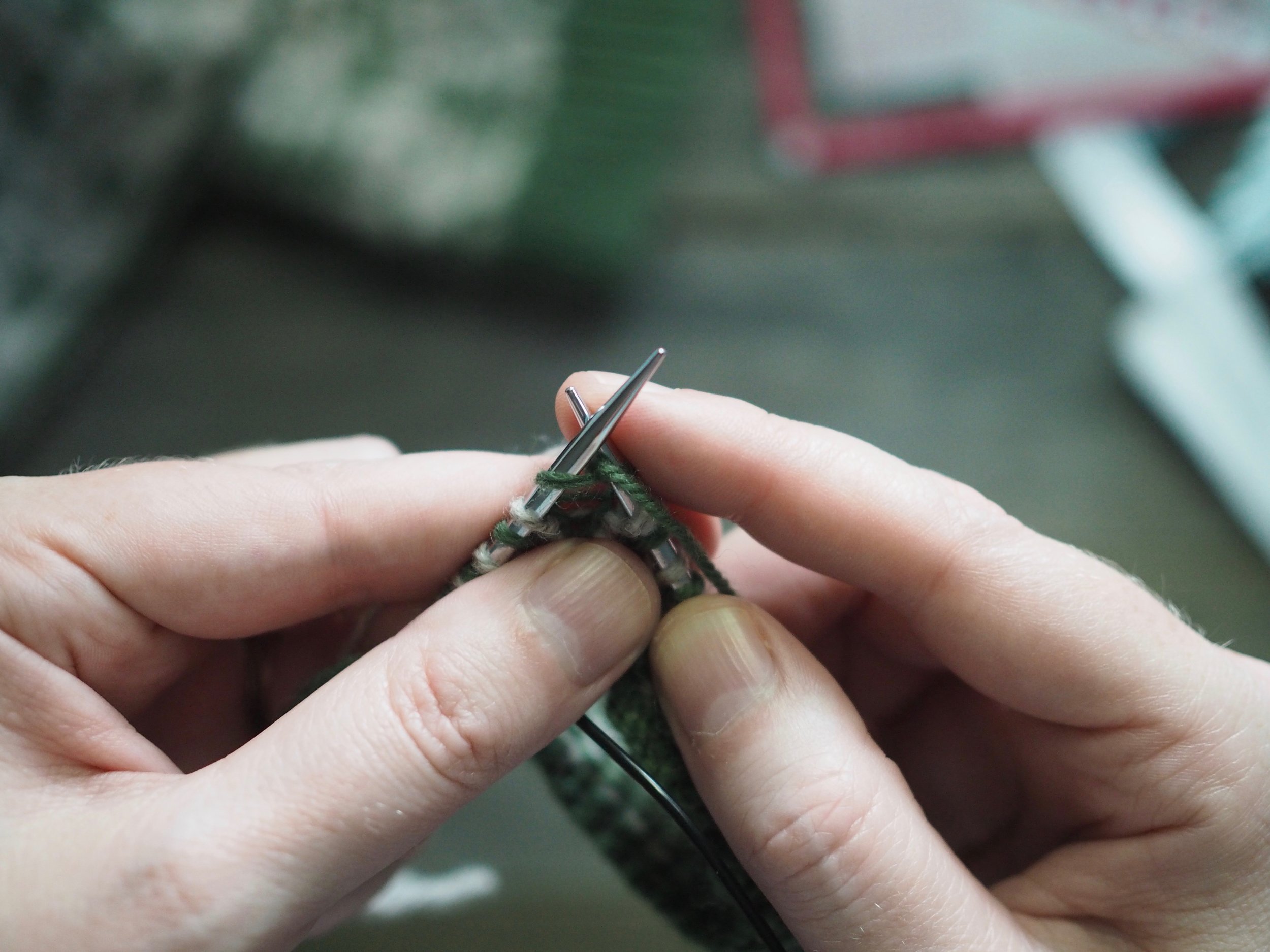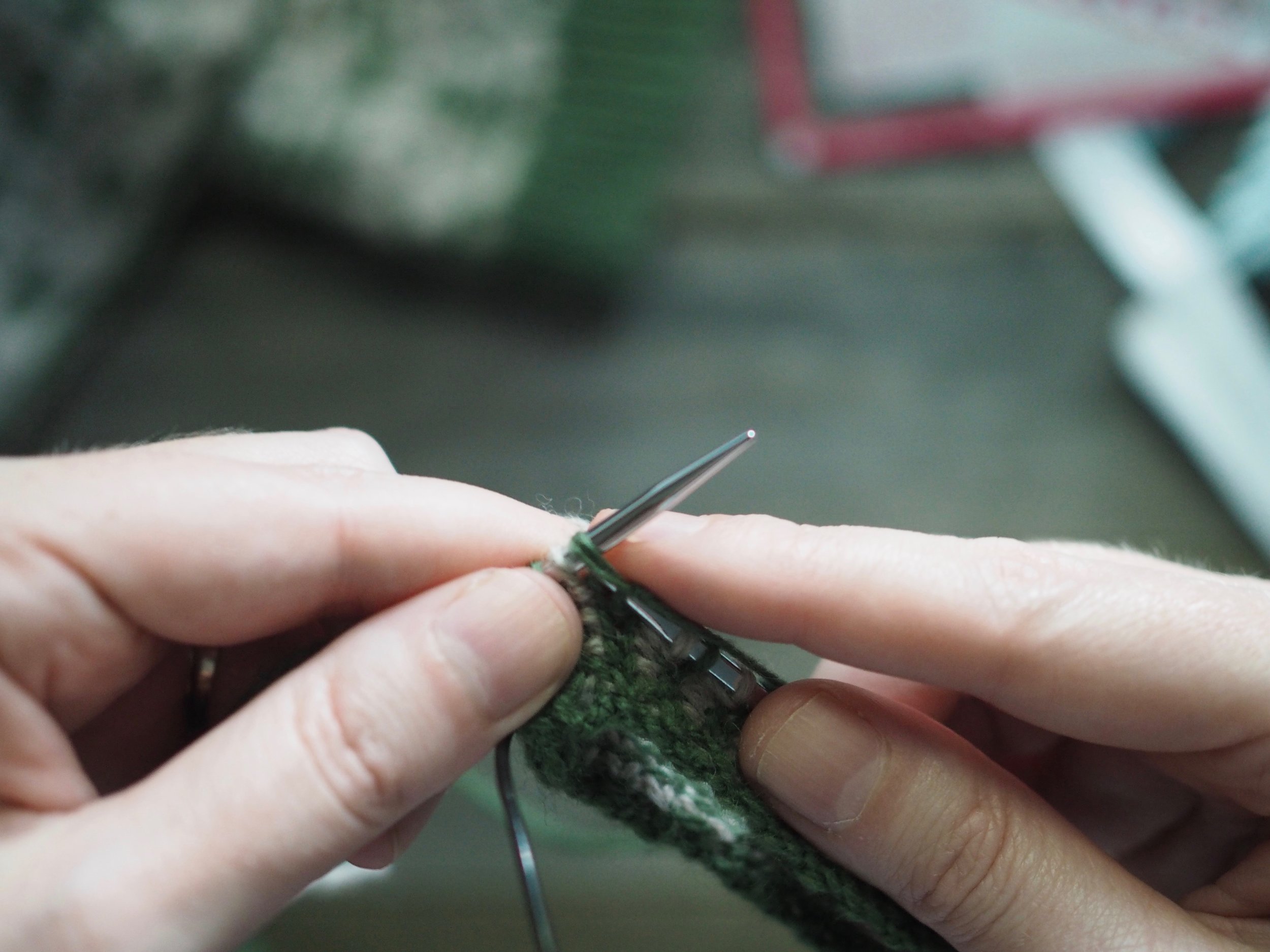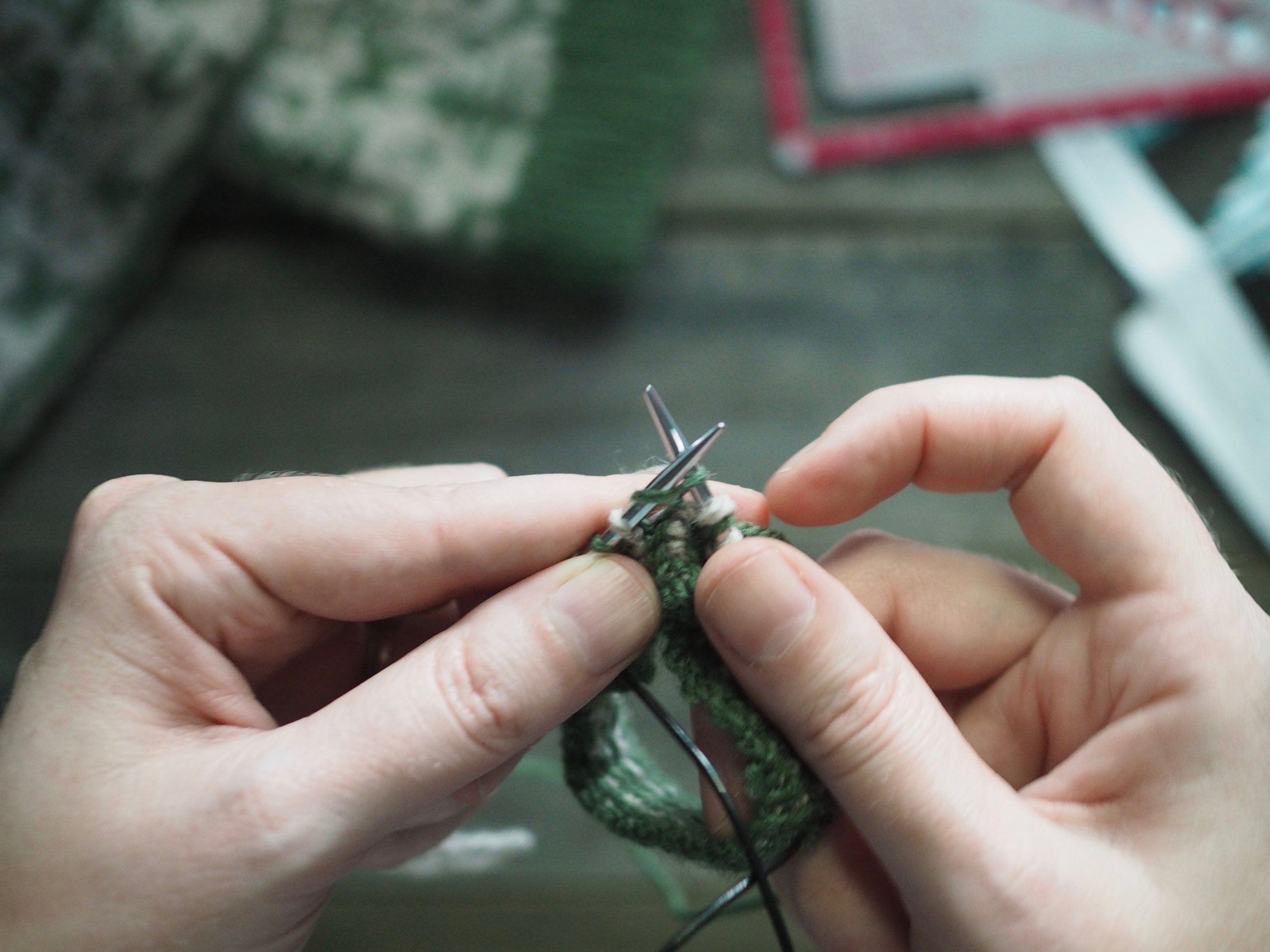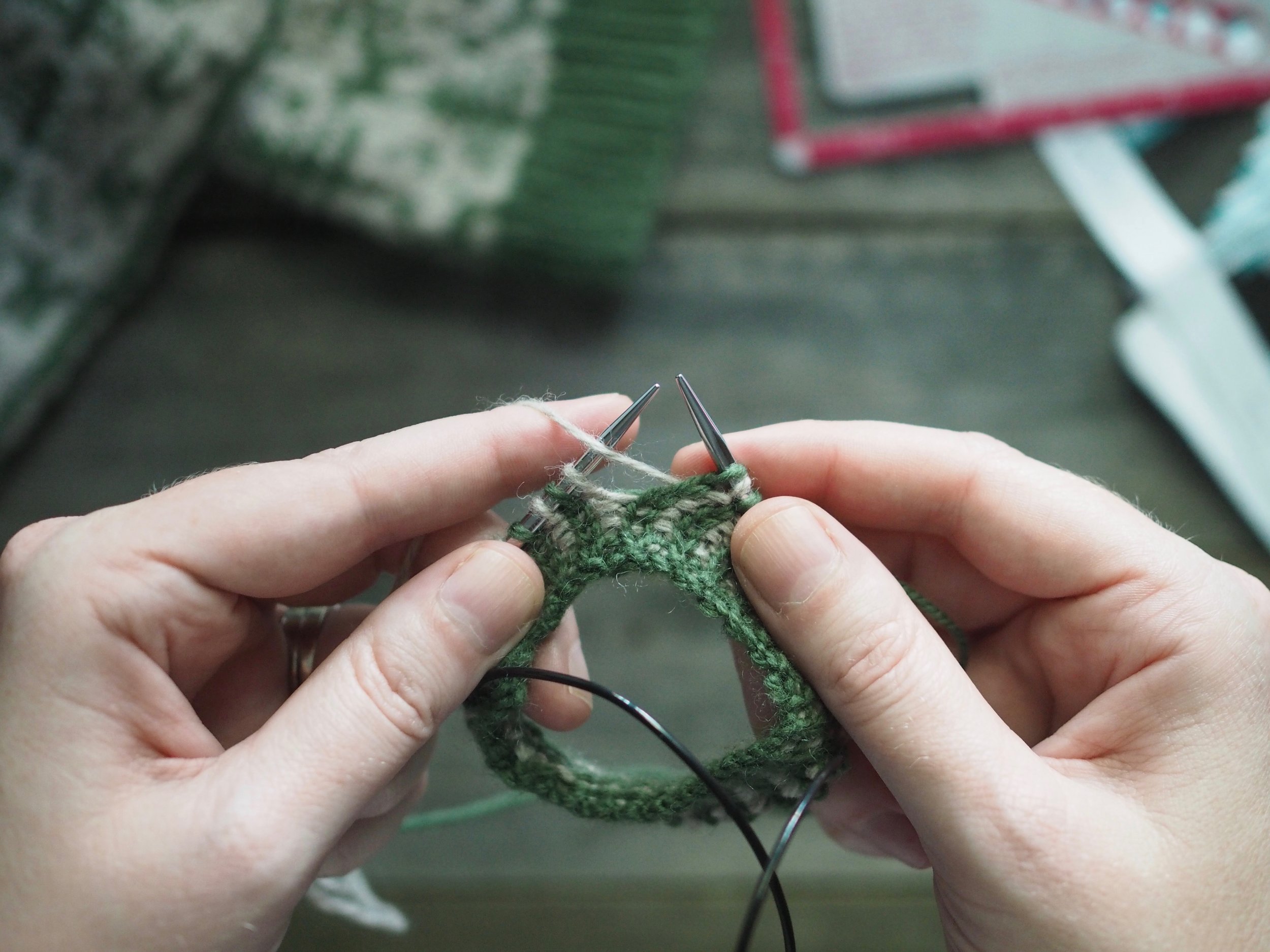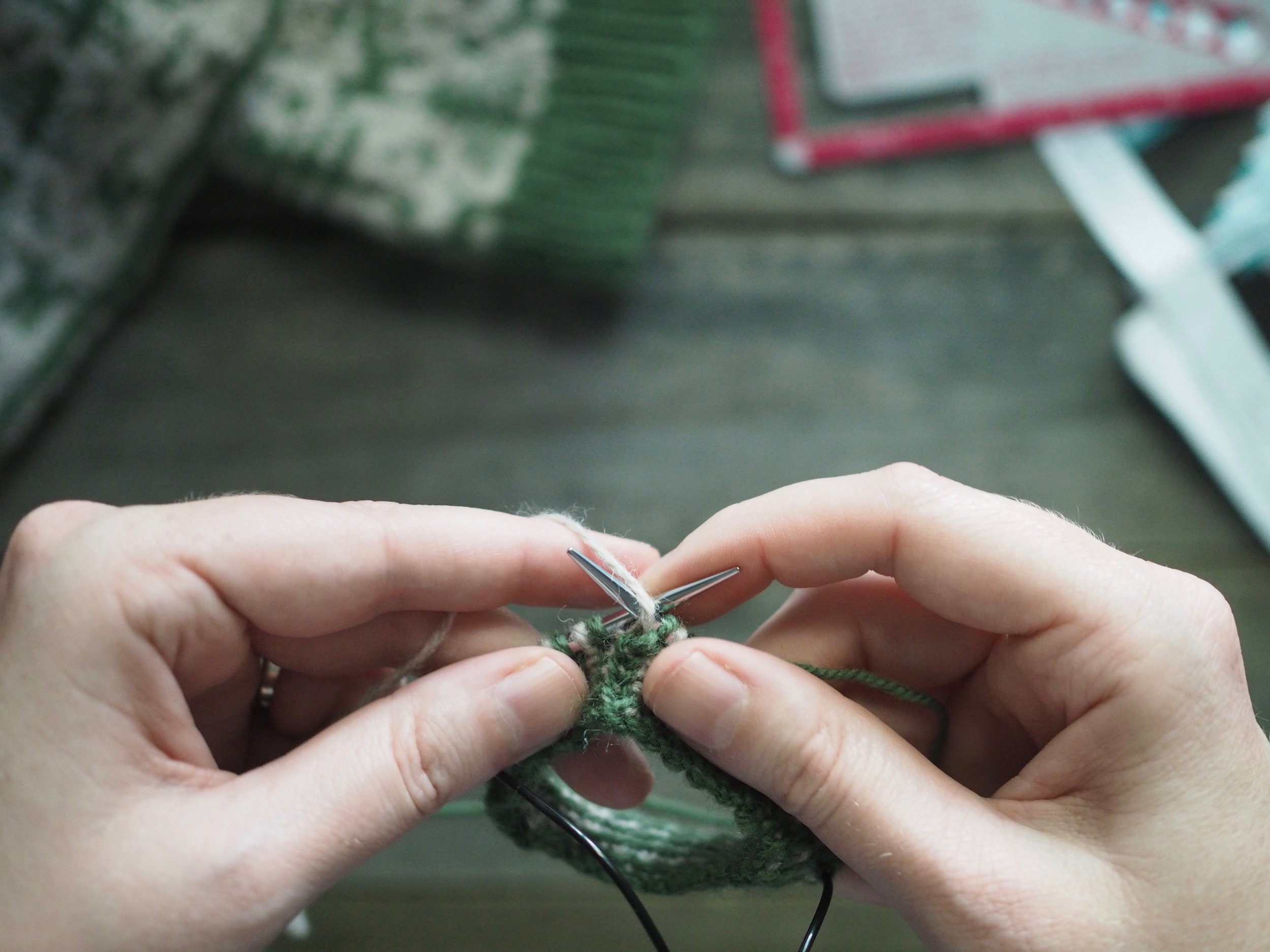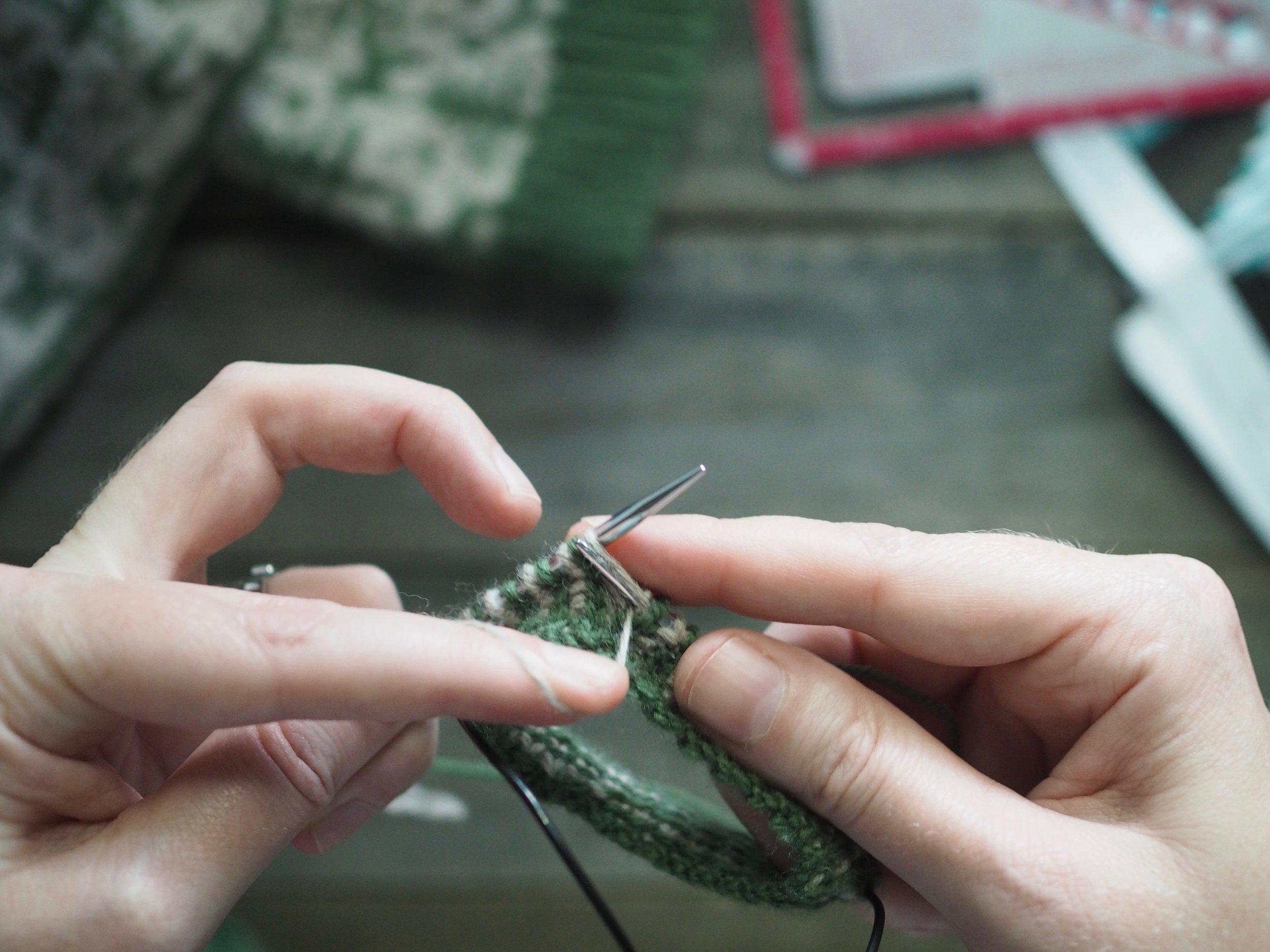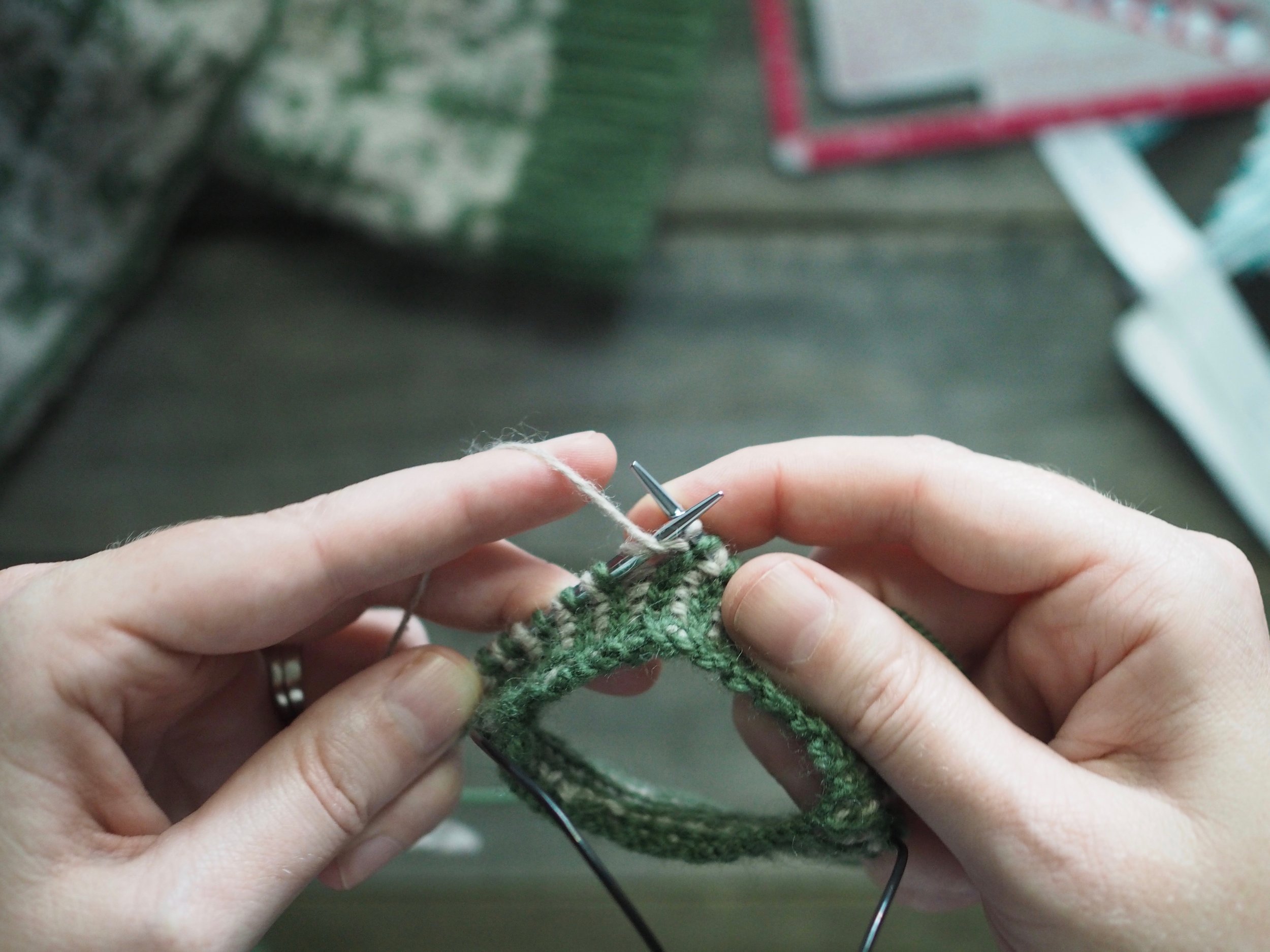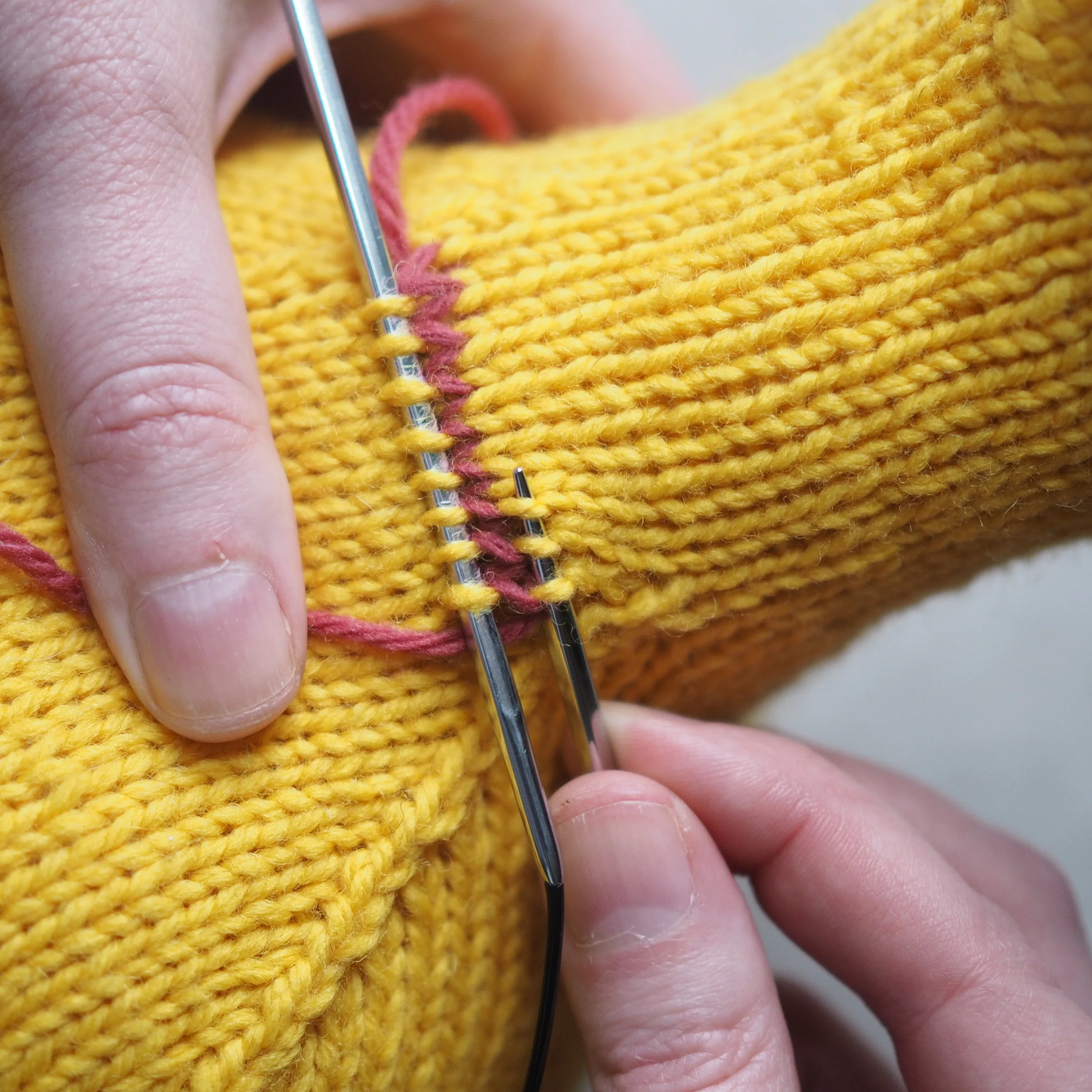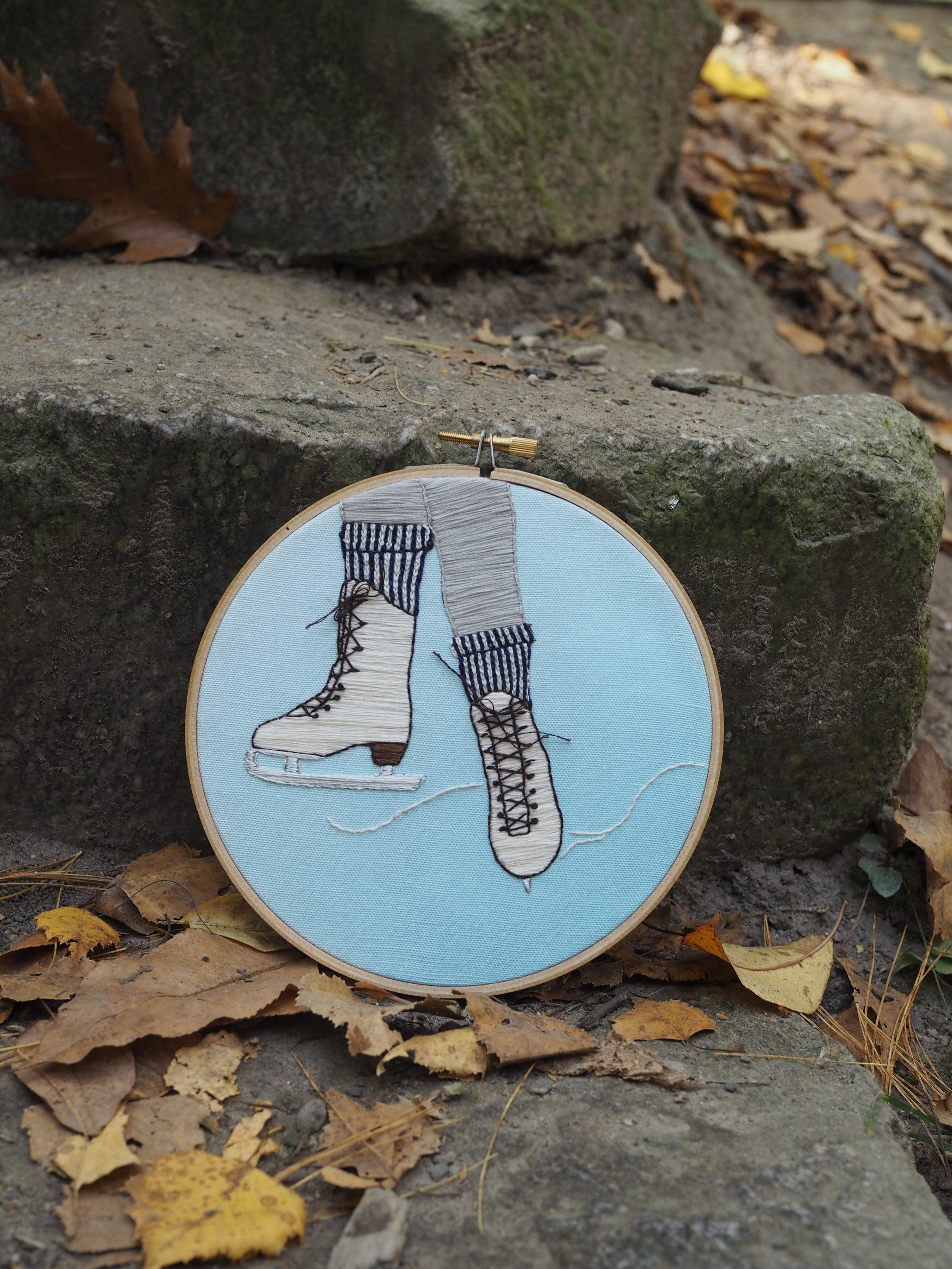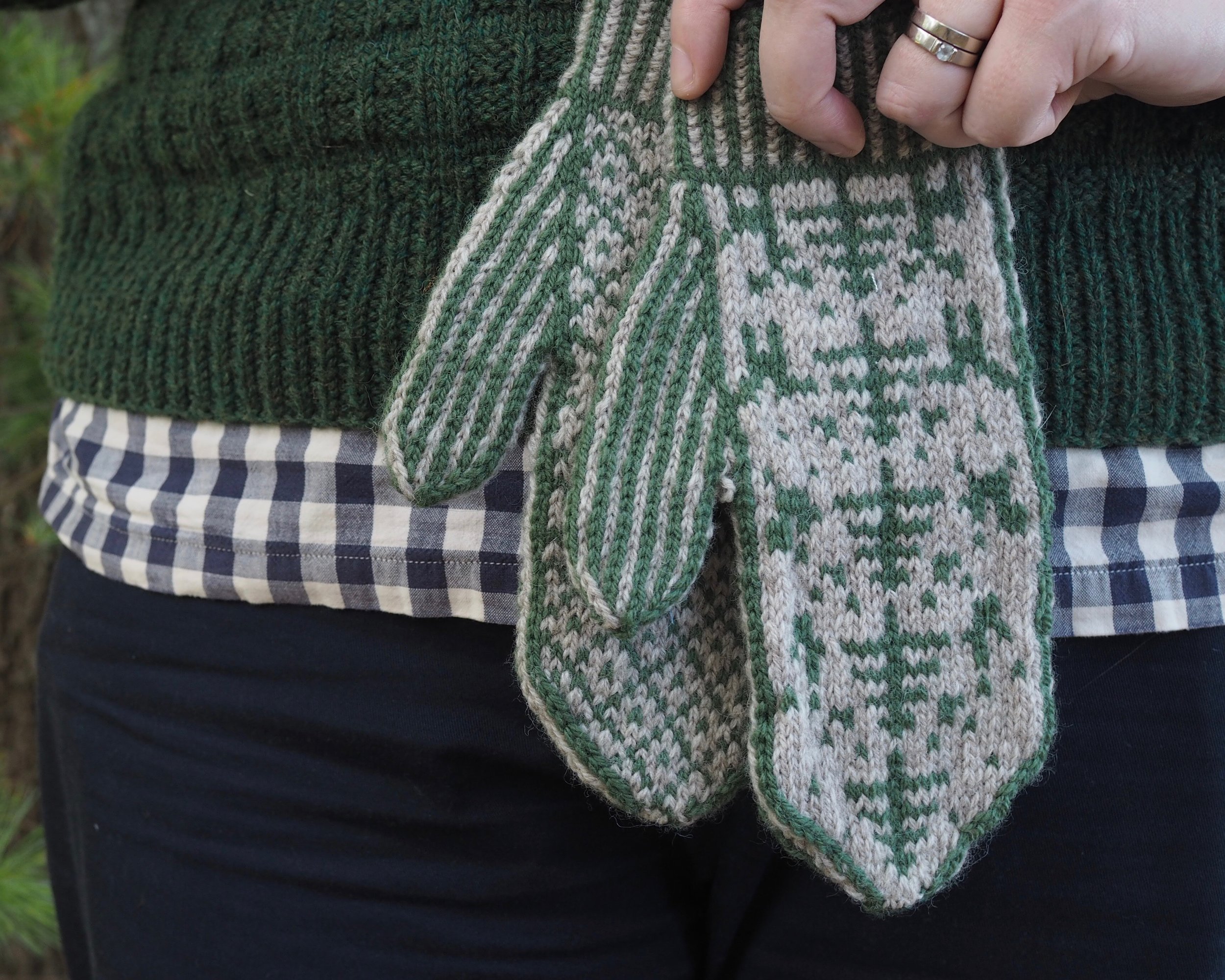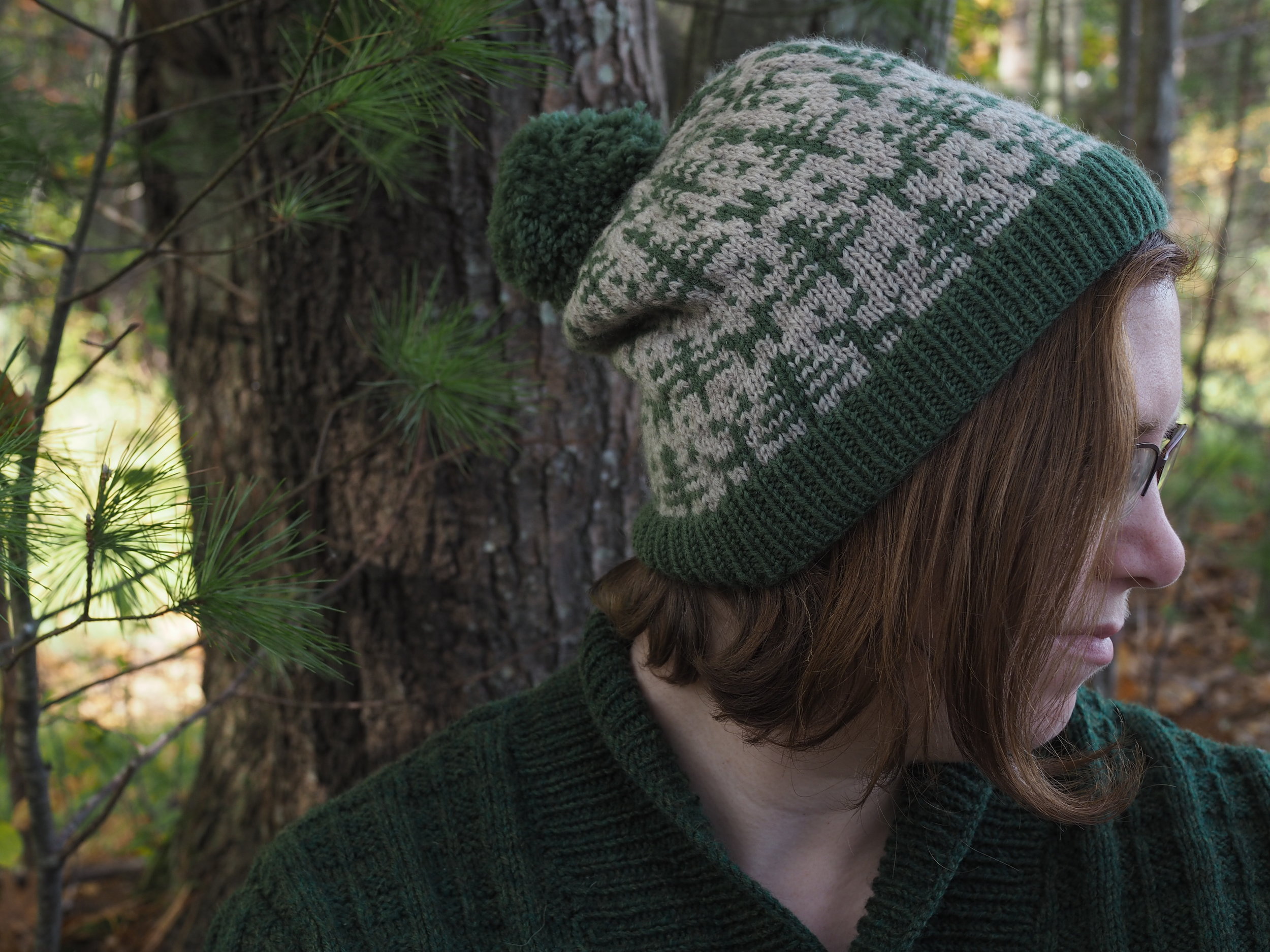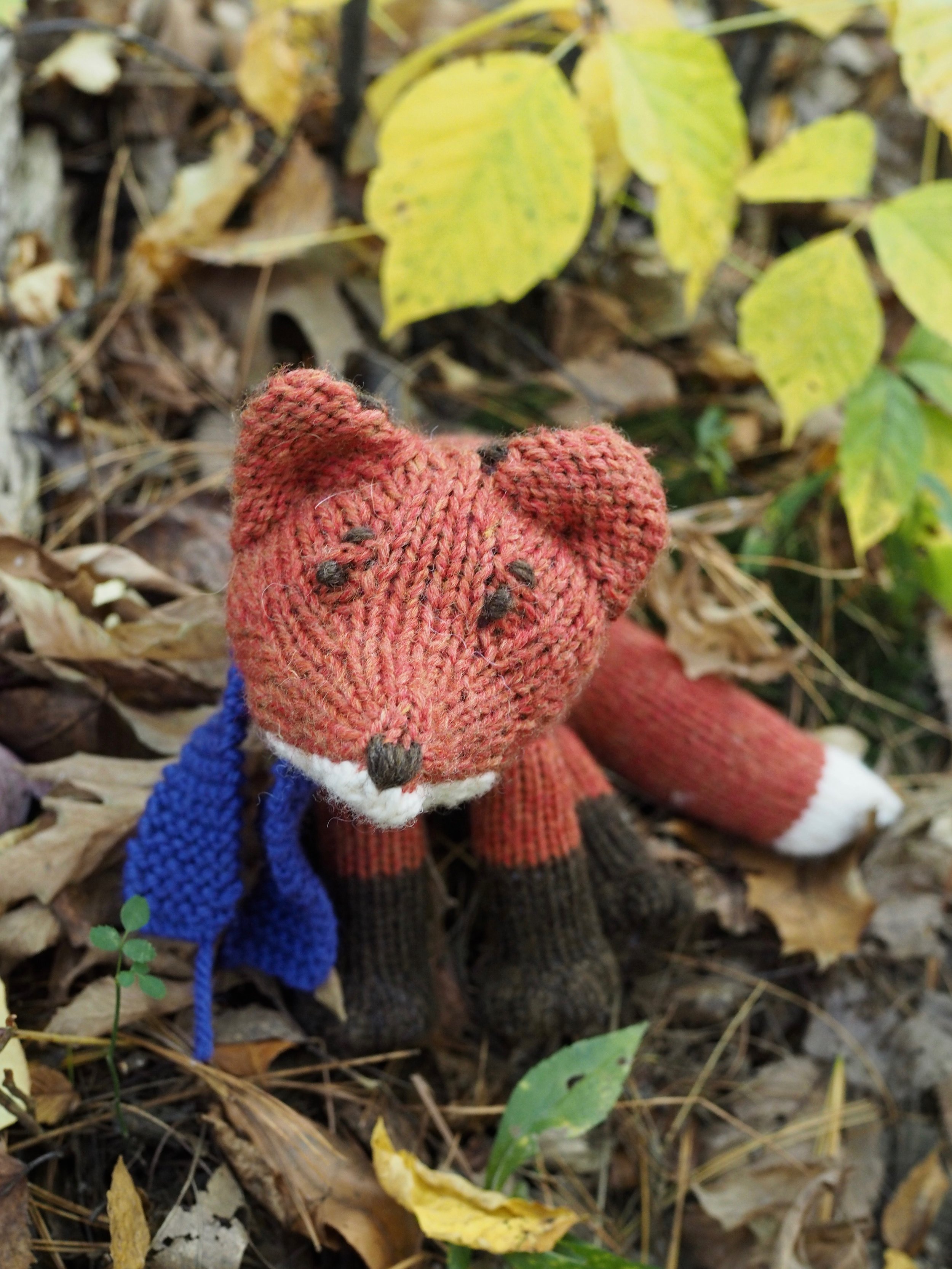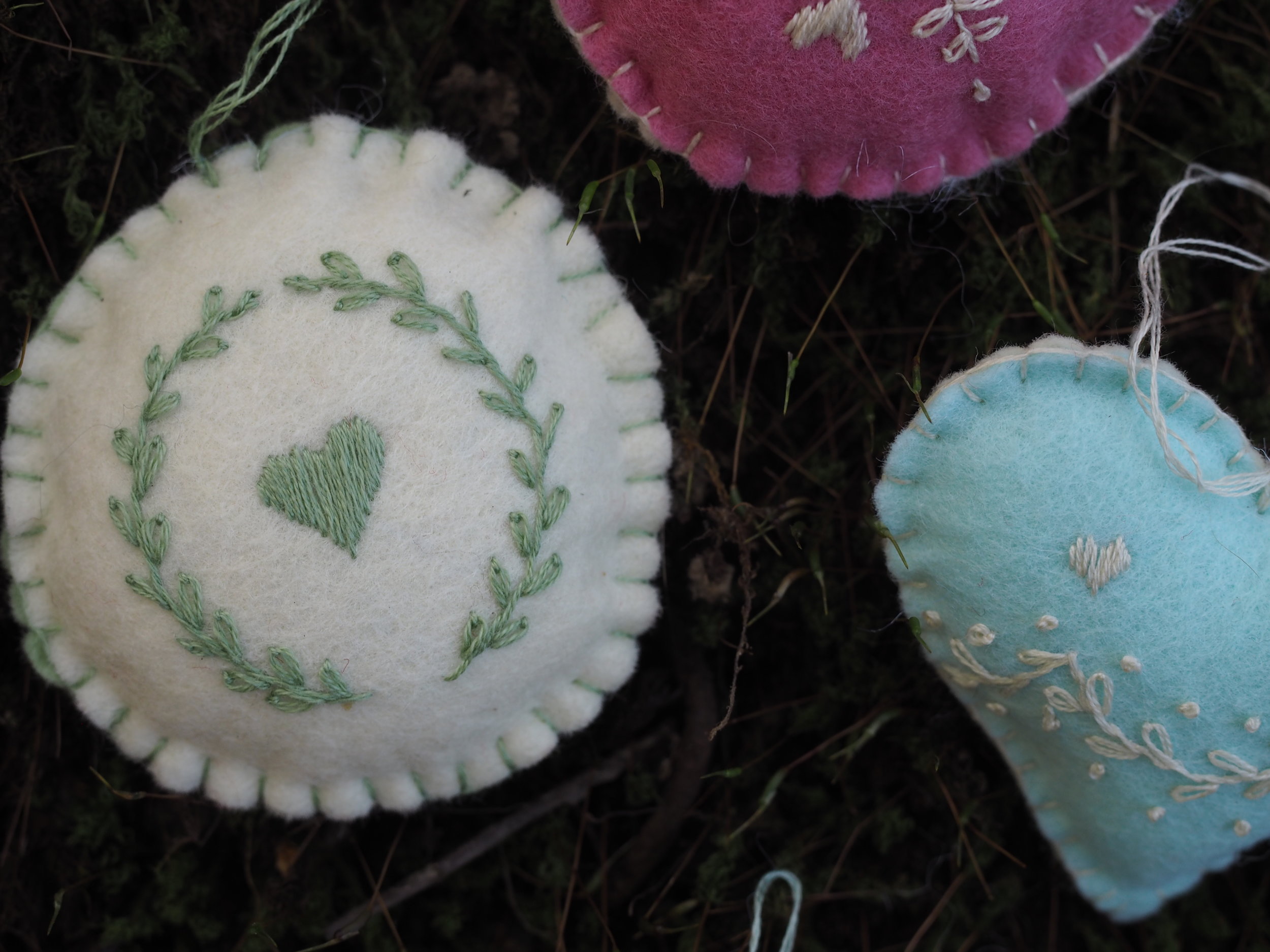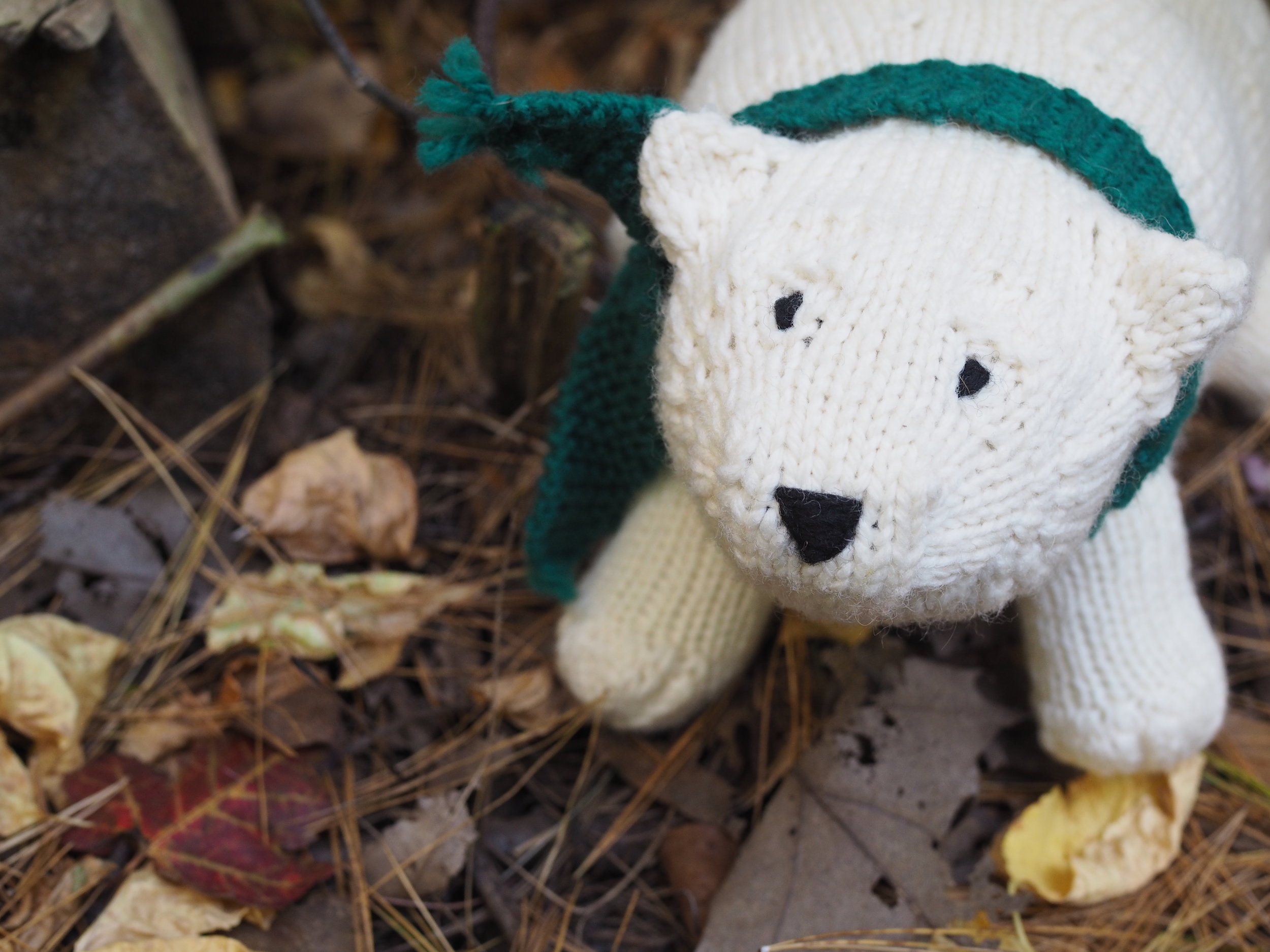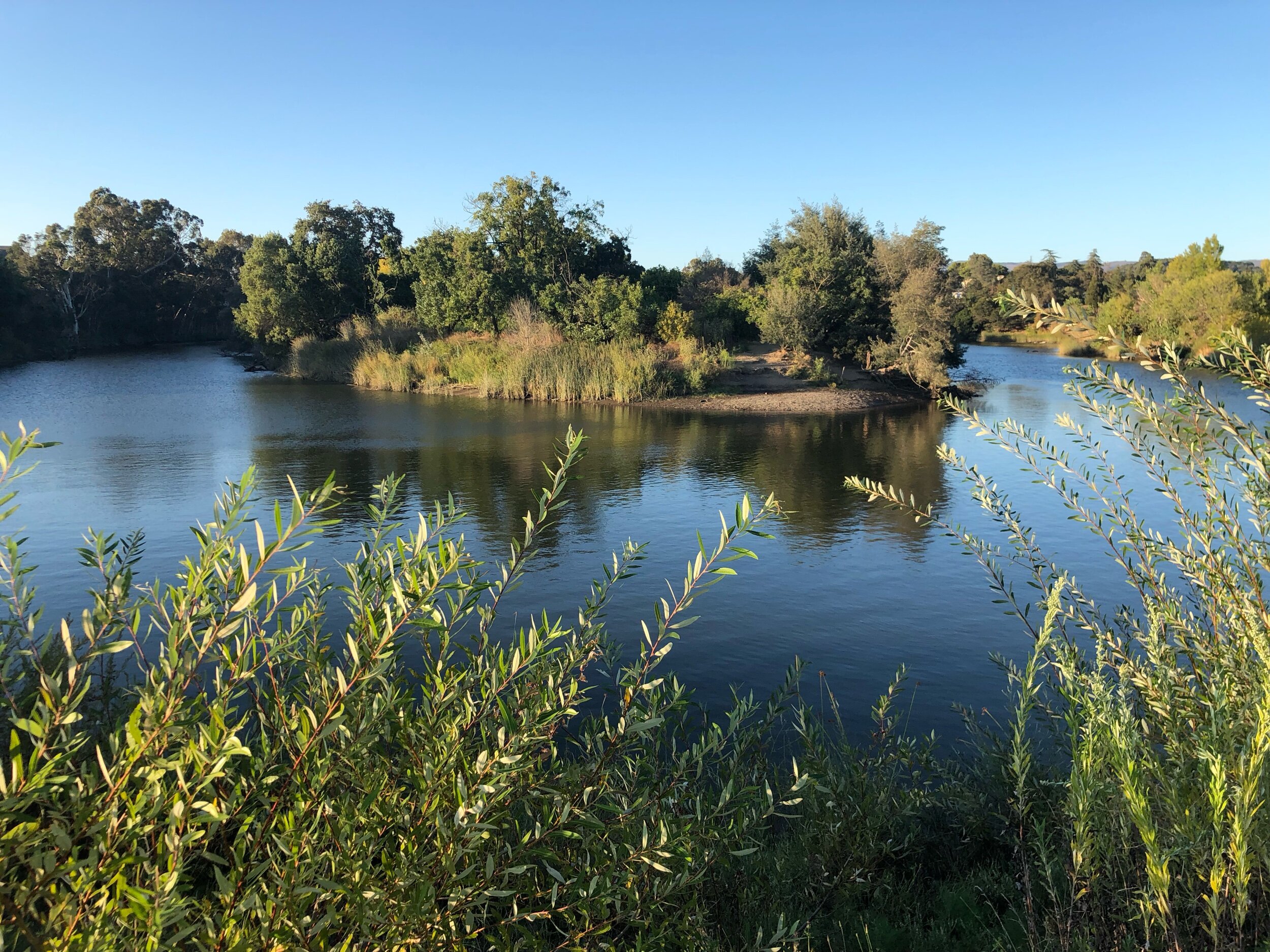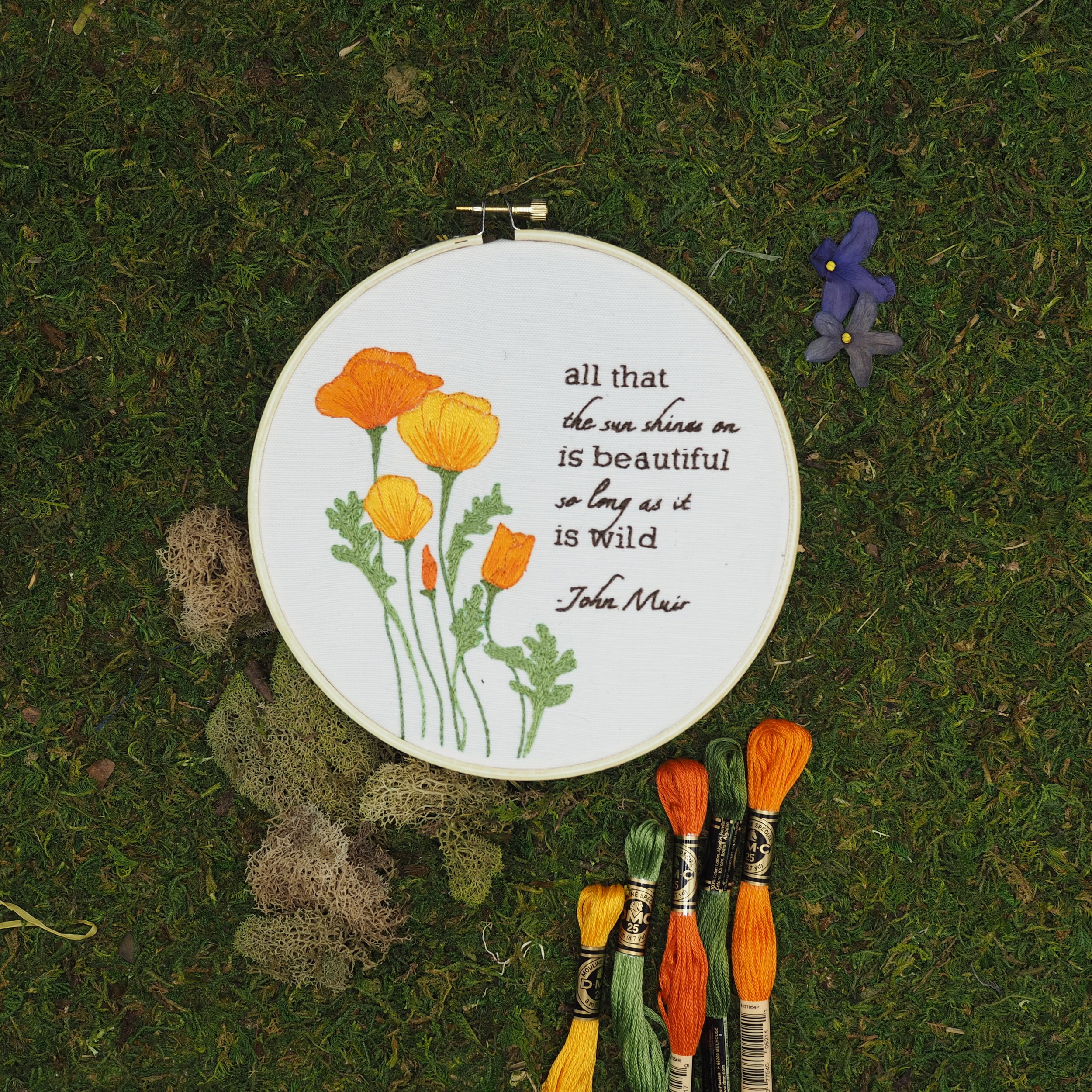Corrugated, or two-color ribbing, is a common decorative edging on many colorwork designs, including my Woodland Mittens. It has a great effect, but it can be a bit trickier than regular colorwork, which is usually done all in knit stitches.
I'm typically a "picker" or continental style knitter, but this tutorial will use both the "picking" and "throwing" techniques for the most efficient way to work this pattern. Not familiar with continental style? This is a helpful tutorial.
By working the rib with two hands this way, you don't have to fuss with dropping and picking up a different color for each stitch.
For the purposes of this tutorial, the green will be our contrasting color, or CC; and the grey will be the main color, or MC. This tutorial also assumes you will be working in the round.
One important thing to know before you start, two-color ribbing will have less recovery/elasticity than regular ribbing, so you may wish to go down a needle size, especially if you're replacing a solid rib with a corrugated one.











